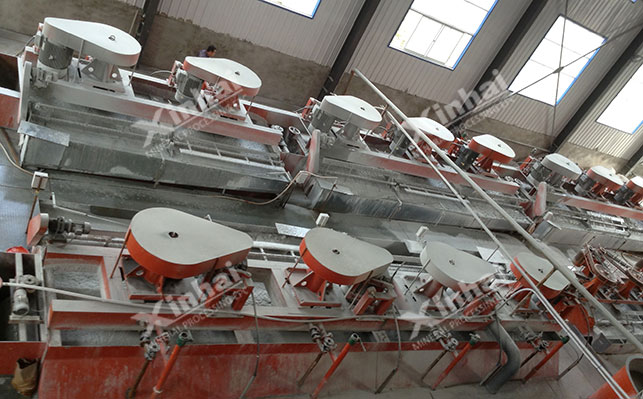Flotation, a fundamental process in the field of mineral processing, has revolutionized the mining industry by enabling the efficient separation of valuable minerals from their associated gangue minerals. This complex technique relies on the interplay of chemical, physical, and hydrodynamic forces to achieve selective mineral separation. In this article, we will explore the inner workings of flotation, its key principles, and the crucial factors that govern its success in unlocking the hidden treasures within ore deposits.

At the heart of the flotation process lies the principle of selective adhesion - the ability of certain minerals to attach to air bubbles while others remain in the aqueous phase due to differences in their surface properties. This phenomenon is governed by the interplay of hydrophobicity and hydrophilicity of mineral surfaces.
Hydrophobic minerals, characterized by their water-repellent nature, tend to associate with air bubbles, while hydrophilic minerals do not. By introducing air bubbles into the slurry containing the mineral particles, the flotation process selectively separates valuable minerals from gangue minerals, producing a froth layer enriched with the desired minerals.
The flotation process typically comprises several essential steps:
a. Crushing and Grinding: The ore is first crushed and ground into fine particles to increase its surface area, ensuring effective interaction with the flotation reagents.
b. Conditioning: The ground ore is mixed with water and flotation reagents in a conditioning tank. These reagents, known as collectors, frothers, and modifiers, prepare the ore slurry for effective flotation by modifying the surface properties of the minerals.
c. Flotation: The conditioned slurry is then introduced into flotation cells, also known as flotation machines or flotation tanks. These cells are equipped with agitators that disperse air bubbles into the slurry, creating a froth at the liquid-air interface.
d. Attachment to Air Bubbles: The hydrophobic minerals in the slurry attach to the rising air bubbles, forming a froth layer enriched with valuable minerals on the surface of the flotation cell.
e. Froth Collection: The froth containing the valuable minerals is skimmed off the top of the flotation cell and collected for further processing.
f. Tailings Disposal: The gangue minerals, which do not attach to the air bubbles, sink to the bottom of the flotation cell and are discharged as tailings.
Several critical factors influence the efficiency and effectiveness of the flotation process:
a. Particle Size: The size distribution of the ore particles significantly affects flotation efficiency. Fine particles may not attach to air bubbles effectively, leading to reduced recovery rates.
b. Flotation Reagents: The choice and dosage of flotation reagents, including collectors, frothers, and modifiers, play a crucial role in controlling the hydrophobicity and selectivity of mineral surfaces.
c. Pulp Chemistry: The pH and chemical composition of the ore slurry influence the mineral surface properties and, consequently, their attachment to air bubbles.
d. Bubble Size and Distribution: The size and distribution of air bubbles generated in the flotation cells impact the rate of attachment and detachment of mineral particles to the bubbles.
e. Froth Stability: The stability of the froth layer is vital for effective froth collection and mineral separation.
Flotation processes can be categorized into several types based on their application and operation:
a. Froth Flotation: The most common type, where valuable minerals attach to air bubbles and are collected in a froth layer.
b. Column Flotation: Involves a vertical column where air bubbles are generated, offering improved selectivity and better froth stability.
c. Dissolved Air Flotation (DAF): Used for wastewater treatment, where air is dissolved in the water to form tiny air bubbles that attach to suspended particles, enabling their removal.
d. Electroflotation: Utilizes an electric field to enhance mineral attachment to air bubbles.
The flotation process finds extensive use in the mining industry for the extraction of valuable minerals, including copper, lead, zinc, nickel, gold, and silver. It is also applied in the water treatment sector for the removal of impurities and in the paper recycling industry for ink removal.
The flotation process is a remarkable achievement in mineral processing, unlocking the riches hidden within ore deposits worldwide. By harnessing the principles of selective adhesion and utilizing a range of flotation reagents, the industry has succeeded in separating valuable minerals from gangue minerals efficiently. As research and technology advance, the optimization of flotation processes continues, ensuring its continued importance in the quest for efficient and sustainable mineral extraction.